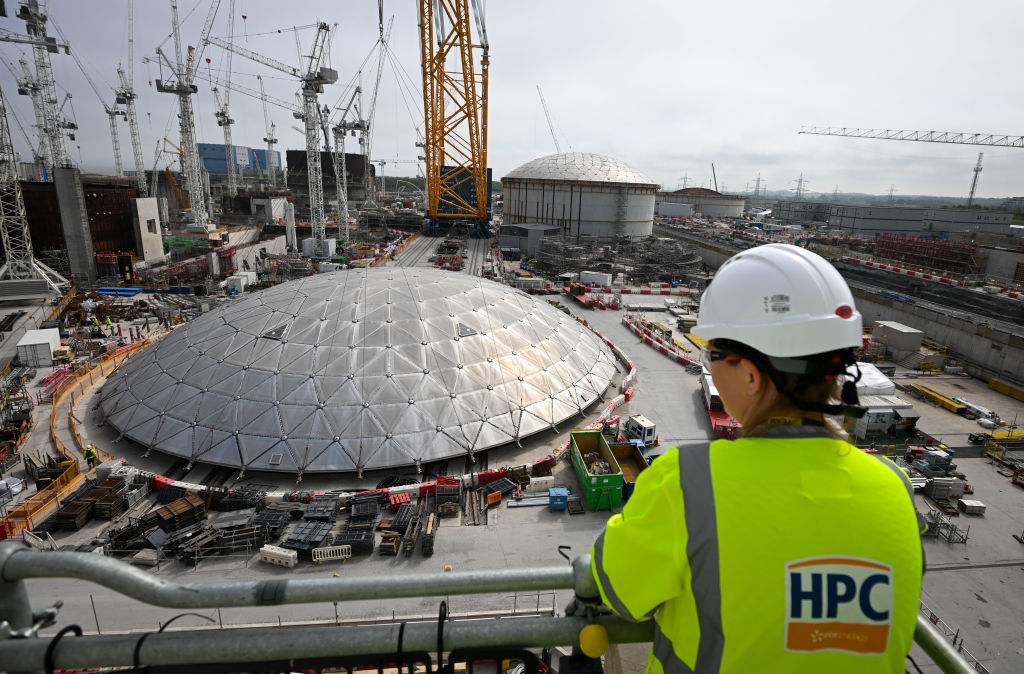
Nuclear energy continues to be a contentious option in the shift away from fossil fuels. Some argue that it provides a secure, safe, longstanding electricity supply while others say that the cost of building and maintaining new plants and issues around waste disposal outweigh the benefits. The UK government has ramped up its investment, with more than £2bn going towards reactors and aims for a quarter of the UK’s electricity generation to come from nuclear by 2050. We asked two academics from opposite sides of the debate to share their views. Read the other side of the argument here.
Boris Johnson hopes his dream of “a new nuclear plant every year” will be aided and abetted by the recent publication of the government’s Energy Security Strategy. But with little interest from the investment market, and the fact that utility-scale solar and onshore wind cost less than a quarter of new nuclear, perhaps the Treasury’s concerns should be taken more seriously.
Here’s why. Hinkley Point C, the only new nuclear construction in town, where energy giant EDF is building two nuclear reactors, is overdue and over budget. Costs have ramped up from an original estimate of £18bn to £26bn, and the Somerset project is not due to open until at least June 2027, and more than likely quite a few years later.
Next in line is Sizewell C in Suffolk, which is supposed to be paid for via the “fiscally dextrous” Regulated Asset Base mechanism, a new funding model that transfers risk from developers to consumers to bring in more investors. This places great financial liability unfairly and squarely on the shoulders of UK taxpayers and electricity consumers, who will be paying for huge upfront costs, inevitable delays and further cost hikes.
And there’s more. The EDF European pressurised water reactor (EPR) design, currently being built at Hinkley C and planned for Sizewell C, may have a generic fault with its most important safety feature: the reactor pressure vessel. As a result, a Chinese EPR has now been shuttered for ten months.
This is not forgetting the horrible mess across the channel, with half of EDF’s nuclear reactor fleet offline, many due to progressive corrosion. The French nuclear regulator is warning a “large-scale plan” lasting “several years” is needed.
Nuclear’s climate-friendly unique selling point (USP) is also up for grabs. Sea-level rise will increase coastal flooding, storm surges and erosion, making current coastal nuclear infrastructure increasingly obsolete. This means even more expense for any nuclear construction, operation, waste management and decommissioning – and, according to the UK Institute of Mechanical Engineers, even relocation or abandonment.
Happily, help is on the way – 256 gigawatts (GW) of non-hydro renewables were added to the world’s power grids in 2020 (nuclear added only 0.4GW). Last year, solar and wind made up three-quarters of all new generation – and with other renewables, the total figure is 84 per cent.
Even the UK investment minister recently concluded that wind farms in the North Sea will be more valuable to the UK than the oil and gas industry. There is no one left to dispute the fact that the heavy lifting of the net zero transition will be done by renewable energy.
Nuclear isn’t just slow and expensive – it’s far too inflexible to ramp up and down with the swings of demand. When the wind fails to blow and the sun doesn’t shine, that’s when grid upgrades, interconnection (which enables power to be shared between neighbouring countries), energy efficiency management, and rapidly evolving storage technology steps in to make up the difference. Nuclear’s contribution has, can and will only ever be very marginal. The reality is, it’s already well past its sell-by date.
Read also: Nuclear is the only answer to our energy transition, by Wade Allison





